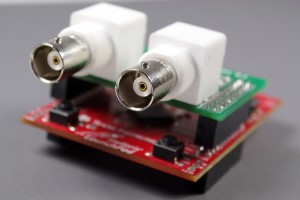Hello World! I am Alexandru Gagniuc, and I’m a free software addict.
I got involved in coreboot in early 2011. I had an old VIA board and just thought I’d try coreboot on it. What could go wrong with an unsupported board? I ignored the “everything” part, and nothing went wrong. I never finished that port, but that’s of less relevance. I learned “how things are done around here”. Besides starting to make small contributions here and there, I was also lucky enough to catch an NDA with VIA and a free EPIA-M850 board. The only thing supported on that board was the superio. Today, we can initialize DDR3 memory and boot Linux with it.
My journey was perilous. I have met a great number of wonderful people along the way. Actually, that’s where I learned most of what I know. My only useful skill when I arrived was knowing how to read C syntax. I have since contributed to a modest number of other projects, most notably sigrok and libopencm3 (I’m the same guy that added support for LM4F there). I just like making hardware come to life, it seems.
This summer, I will be bringing you a tool to unlock your bricked LPC and FWH flash chips. I need a break from needing to program 30 years of history, and needing to deal with thousands of registers in several different IO and memory spaces. I’ve chosen Cortex-M as my operating table. No port IO, no configuring memory regions, no interrupt handlers, no memory initialization, no “any of the one million things that can silently break”. Everything is memory-mapped and the number of registers is so insanely small, that it makes sense to #define them all. It’s small, it’s readable, it’s not confusing. It’s beautiful. It’s the best coding vacation anyone can take from coreboot.
I will use a Stellaris Launchpad as my patient. For anyone coming late to the game, the new name is Tiva C Launchpad. I’ll use the Stellaris because
- it sounds a lot cooler than “Tiva C”
- the name actually fits well next to “Launchpad”
- I was able to snatch a couple of them last year for $5 a piece.
- The picture at the top would not look as cool if it were a “Tiva C”
I’ll turn the innocent looking red slab into a mean lean, programming machine. We’ll start with LPC. Emulating a 33MHz 4-bit bus should be fun (not counting the obscene cost of coffee, and red eyes due to sleepless nights). I didn’t say it will be easy, but as Jimmy McMillan once said, “the fun is too damn high!”
Next time, I’ll tell you how to set up the development environment, and how to put some firmware on the board.

